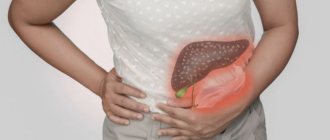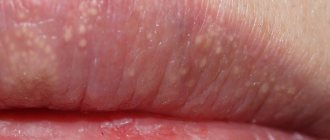Not a single person is immune from a situation with a chipped tooth: even strict adherence to the norms and rules of hygiene, a healthy lifestyle does not exclude such risks, because one of the causes of chips is injuries.
The good news is that in most cases, you can restore your tooth to its original shape and function, and your smile to its beauty quickly, painlessly and inexpensively. Modern dentistry has many recovery tools; the main thing is to try to see a doctor as soon as possible and not ignore the problem.
The difference between chips and other diseases
Many patients confuse chips with similar injuries or diseases of the oral cavity. However, despite the similarities, it is important to distinguish certain conditions into separate problems that require a completely different approach to treatment. The most common similar conditions are the following:
- Tooth fracture. It exposes the coronal and sometimes the root part of the pulp, which leads to its death; it is almost impossible to save a tooth with a root fracture - it must be removed.
- Wedge-shaped defect - looks like a chip in the cervical part of the tooth; it is a non-carious lesion. In especially severe cases, such an enamel defect can cause the entire crown to chip off.
- Chip accompanied by dislocation. It usually appears as a result of injuries and complicates the treatment process, since the doctor’s task is not only to restore the shape of the crown, but also to treat the dislocation.
That is why, in cases where part of a tooth has broken off, an accurate diagnosis is carried out. Mechanical injury requires careful assessment of the consequences before starting treatment. The dentist may prescribe x-rays and other examination methods and methods to exclude serious consequences of damage.
Ask a Question
What to do with a thin protective shell
In case of damage or genetic predisposition, there is no need to be upset. We will have to strengthen control and care of the oral cavity in order to prevent the development of pathological processes and long-term treatment, but there is nothing terrible about it. Follow a few basic principles that will help keep your smile beautiful and your teeth healthy:
- stop eating solid foods;
- visit the dentist at least once every six months;
- carry out professional fluoridation;
- use remineralizing agents twice a day as prescribed by your doctor;
- stick to a diet, eat more vegetables, fruits and healthy foods.
To prolong the beauty of a smile, it is enough to increase attention and care. This will not take much time, but will prevent further tooth thinning and damage.
Reasons for chipping
The mechanism for the development of chipping is a mechanical effect on the tooth enamel. But one person can crack nuts with his teeth, while another may have enamel chipped off as a result of eating seeds. This means that weakened enamel is a major risk factor for chipping. There are several reasons for its weakening:
- Frequent, repeated injuries, for example, in connection with professional or sports activities, traumatic hobbies.
- The habit of chewing pens or pencils, opening bottles with teeth, etc.
- Demineralization of enamel - areas with a reduced amount of minerals, which may be associated with endocrine diseases, poor nutrition, age-related changes and more.
- Caries, which is not noticeable during a normal visual examination - cervical or interdental, is not detected immediately, but can quietly destroy the tooth and make it more fragile.
- Malocclusions, in particular crossbite: due to the defect, the chewing load is distributed incorrectly. As a result, pressure increases on one group of teeth, which weakens the enamel.
- A chipped tooth may be associated with a filling defect, secondary caries, etc. In addition, removal of the pulp during endodontic treatment can lead to a weakening of the tooth enamel structure.
- Fixation of an orthodontic structure on weakened tooth tissues.
- Violations of hygiene rules are an indirect cause, but the accumulation of dental plaque and the formation of hard dental deposits can become a factor in greater vulnerability of the enamel.
- Consumption of hard, viscous foods.
- Temperature difference - eating hot and cold food and drinks at the same time or alternately. This causes small, invisible cracks in the enamel and weakens its structure.
- Bruxism, diseases of the temporomandibular joint, dystonia of the masticatory muscles, leading to jaw closure, voluntary and involuntary grinding.
- Smoking. Changes in the acidity of the oral cavity, saliva composition associated with systemic diseases, dietary habits and other factors
We found that a tooth is more likely to chip if the enamel is weakened or its structure is changed. However, chips are different, each case requires a special approach and the selection of individual restoration measures.
Pastes and gels
At home, a person can strengthen enamel by using high-quality dental pastes and gels. Particularly valuable are compositions that include the following components:
- Fluorine. It is better absorbed when presented in the form of sodium fluoride or amino fluoride. Passing through the outer layers of enamel, these components react with hydroxyapatite, the main substance that makes up the upper shell of the tooth. As a result, a strong connection is formed that is not susceptible to the negative effects of bacteria and acids that cause caries. On an ongoing basis, a person can use products containing 1000 ppm of fluoride. If the doctor has prescribed a treatment course for weakened enamel, this indicator can be increased to 1500 ppm. In this case, the drug will also exhibit remineralizing properties. But it is suitable only for course use. If the packaging says that fluoride contains more than 1000 ppm, you should not use the product without consulting a doctor. Such amateur activities often result in fluorosis, a very unpleasant dental disease associated with an excess of fluoride in the body.
- Hydroxyapatite. An excellent remineralizing component. Helps to qualitatively strengthen dental tissues at home. It quickly integrates into the crystal lattice of hard tissues. Even eliminates caries at the spot stage. The compound fills all the small cracks and makes the crown part absolutely smooth, resistant to the destructive effects of bacteria and microbes.
- Amorphous calcium phosphate, glycerophosphate. These substances have the unique ability to form a kind of protective film on the surface being treated. It strengthens the enamel and protects the unit from the destructive influence of harmful factors. It is important to know that these two components are contraindicated for people who are allergic to milk protein.
Natural plant extracts. There are a lot of pastes with plant extracts on sale. Natural ingredients such as propolis, chamomile, sage, lavender, yarrow, and oak bark have proven themselves to be excellent. Of course, they are not as effective as the above-mentioned chemical components. But they have a good effect on the condition of the gums, relieve increased bleeding and provide reliable prevention of gingivitis.
If you are looking for something to strengthen your teeth, then start with professional hygiene. This procedure will prepare the dentition for further activities. Immediately after hygiene, ask your doctor what products he will recommend for you. This approach to therapy is the most effective and completely safe.
Types of chips
There is a conditional classification of chips:
- Enamel chip - in this case, the patient will most likely report that a piece of the tooth has broken off. This injury is not accompanied by pain. Sometimes the defect is not even noticeable and invisible to the eye. In certain cases, trauma can lead to increased sensitivity of the causative tooth to cold, hot, sour and sweet foods, and cool air.
- Dentin chip: in this case, the patient observes that a rather large piece of the tooth has broken off. The injury is visible to the naked eye, and unpleasant or painful sensations appear. If the dentin chip is not repaired quickly, the tooth will quickly continue to deteriorate.
- A deep chip that leads to exposure of the pulp as a result of a fracture of the tooth crown. Opening the pulp chamber can lead to bleeding, always accompanied by acute pain. However, taking analgesics rarely brings the desired result. In this case, it may not be possible to save the pulp even if you consult a doctor early, but it is important to visit the dentist as soon as possible in order to save the tooth and get rid of pain.
How does tooth inflammation manifest?
The first signs of acute inflammation are:
- Redness of the gums around the tooth.
- Swelling.
- Pain when biting, pressing, and later without it.
- Sensitivity to temperature changes, sour, sweet.
- Enlargement of regional lymph nodes.
- Bleeding gums.
If the inflammation has progressed to a chronic stage, the patient may observe:
- Increase in temperature (local or general).
- Weakness.
- Intense pain.
- Inflammation is manifested in the results of clinical tests.
PROMOTION
Hygienic teeth cleaning
2000 rub.
Symptoms of chipping
If the chip is small, no symptoms may appear. Sometimes a person begins to guess about a chip because of the appearance of roughness of the tooth or its sharp edge. If we are talking about a tooth in which the pulp was previously removed, then even a large chip will not lead to pain.
In the event that part of the enamel next to the installed filling was chipped, this can affect its service life and even cause immediate loss or destruction.
Despite the fact that a small chip sometimes only causes aesthetic inconvenience, it is better to restore the previous shape of the tooth crown as soon as possible. Otherwise, the tooth may continue to deteriorate, and the rough enamel surface is an ideal environment for the proliferation of cariogenic bacteria and plaque accumulation.
Dental treatment for children
The opinion of some parents that children’s baby teeth do not need treatment, since they will soon fall out anyway, is fundamentally wrong. A normal bite is formed on the basis of temporary teeth and, if caries progresses, the infection penetrates into the deep tissues and can damage the newly formed dentition.
Premature loss of baby teeth, destroyed by caries, leads to disorders that, even if they can be corrected, will cost a lot of time, money and nerves. The jaw develops with pathologies, permanent teeth grow out of place, often crowded. Subsequently, the child will have to wear braces for years in order to somehow straighten the teeth and achieve a normal smile.
Advanced caries causes pulpitis - inflammation of the dental nerve, periodontitis, and the formation of a cyst in the root area. To treat such consequences, you will have to fill the root canals. But the process does not stop there: periodontitis can turn into osteomyelitis and cause an abscess, and this is a problem on a completely different level. The disease reduces the overall immunity of the body and poses a threat to the very life of the child.
If you have any questions, doubts, etc., talk to your pediatric dentist, visit the clinic, sign up for a free consultation, find out how dental treatment for children is carried out, but do not leave your child alone with a problem he is not aware of. able to decide on my own.
What to do if a tooth chips off
If a tooth chips, there is no need to panic. It is important to take no action until you can see a doctor. The most common mistakes are the following:
- attempts to “grind” the damaged area of enamel: this can lead to serious problems;
- an attempt to check the mobility of the tooth: it is not worth acting on it mechanically in any case;
- rinsing the mouth with antiseptics not intended for this purpose: as a result, burns of the mucous membranes and other complications.
How to help yourself in the first hours
You can rinse your mouth using regular or antiseptic rinses or chamomile decoction at room temperature. It is better to brush your teeth more carefully using a brush with soft bristles, and if you don’t have one, avoiding an injured tooth.
If there is a fracture of the crown and bleeding, it can only be stopped with a piece of sterile bandage or sterile cotton wool; there is no need to introduce material into the tooth! If acute pain is observed, you can take an analgesic; it is better to choose one that you have already taken before and the reaction to which is known.
It is important to understand that such measures do not eliminate the need to see a dentist as soon as possible. This will help preserve the tooth and prevent complications, quickly restore its normal shape.
Is it possible to do without going to the dentist?
A visit to the dental clinic is the only way to get rid of inflammation and, if possible, save the tooth. The sooner the drugs are taken, the higher the likelihood of a favorable outcome. Otherwise, the patient risks getting the complications described above, among which tooth loss is not the most unpleasant outcome.
Timely detection of the disease is the key to success. Don't rely on home treatment. Without the intervention of a dentist, tooth inflammation can only progress, causing more and more dangerous consequences over time.
Methods for restoring a tooth after a chip
In cases where a piece of a tooth has broken off, the doctor will conduct a visual examination. X-rays and other additional examinations may be required to select a treatment method.
For minor chips, it may be enough to saturate the enamel with minerals and make the surface of the damaged area smooth. This is especially true in cases where slight grinding of tissues will not lead to an aesthetic defect, for example, asymmetry.
With an average chip, it is difficult to do without the use of artificial materials. You will need to use a filling material, an artistic restoration method, or other tools to restore the shape of the tooth.
When the pulp is opened, it will most likely be removed, the root canals will be filled, and the crown will be restored with a filling or prosthesis. Sometimes it is not possible to restore a tooth. Then its removal and subsequent installation of an implant is required.
The method of restoration is determined by several factors: the degree of destruction, the diagnostic result and identification of the causes of the chip, the general condition of the oral cavity, the wishes of the patient, etc. Let us consider the methods of restoring teeth after various chips in more detail.
Help with pulpitis
Without proper treatment, caries can develop into pulpitis. The pain syndrome with it is more pronounced, occurs without a reason, the pain intensity is very high. The attacks last a long time, they are especially pronounced at night.
You can somewhat reduce inflammation and quickly relieve toothache due to pulpitis using the same folk remedies as for tooth root abscess.
Effective recipes against pulpitis
- Add a few drops of lemon juice and twenty drops of hydrogen peroxide to half a tablespoon of baking soda. The mixture is placed in the hollow of the diseased tooth and used to numb the gums. The intensity of the pain syndrome noticeably decreases after fifteen minutes.
- Place half of the No-shpa tablet into the tooth cavity. If the inflammatory process begins under the filling, the tablet is applied to the back wall of the tooth. No-spa relieves pain gradually: as it dissolves.
Artistic restoration
This method is also called extension. This method is widely used for noticeable chips and moderate chips. Restoration consists of layer-by-layer application of a special composite material. Each layer is illuminated with a special lamp. The doctor may use various tools to give the tooth a natural shape. This is a direct artistic restoration. It involves restoration directly in the patient’s mouth.
Indirect restoration involves the installation of restorative structures, previously made according to an individual impression in a dental laboratory. This group of methods includes ceramic veneers, inlays - fillings, pre-made in the laboratory according to exact parameters.
Both restoration methods can restore the shape and function of a chipped tooth effectively and aesthetically. Materials are selected to match the tone of your own enamel. Indirect restorations are more reliable and aesthetically pleasing.
If your wisdom tooth hurts
In cases where a wisdom tooth begins to hurt, doctors recommend removing it immediately. If he starts to cut himself, then you can help yourself a little on your own. The process can take almost a year, and the gums may become inflamed, the cheek may swell, and severe pain may occur—it feels as if the entire jaw is being broken out. The temperature can also rise to 38-40°C.
- Within 4-5 days you can take analgesics in accordance with the indicated dosage.
- You can use Metrogil Dent or Dentinorm.
- Regularly, several times a day, rinse your mouth with decoctions of chamomile, sage, calendula, and oak bark.
- A warm solution of salt and soda (one teaspoon per glass of water) will help.
Sealing
This method is indicated for chips that appear as a result of carious tooth decay, as well as for major damage to the tooth crown. In this case, radiographic examinations are often required. If the crown is significantly damaged, filling may be ineffective - the filling simply cannot last long. In this case, the doctor will offer alternative options.
If the pulp is damaged, filling alone may not be enough. First, the pulp is removed, treated and the root canals are filled. Then the crown of the tooth is restored using filling material or another method.
Tooth structure
The tooth consists of two parts. 1 - The top part of the tooth - the crown, which is visible in the mouth and 2 - the root of the tooth, which extends into the jaw bone to support the tooth in the desired position.
Teeth also consist of:
- enamel - hard outer coating
- dentin - the softer material that supports the enamel and forms the majority of the tooth
- pulp is the soft tissue in the center of the tooth, consisting of nerves, blood vessels and lymphatic vessels.
The root canal system contains the pulp of the tooth and extends from the crown of the tooth to the end of the root, its apex. One tooth can have more than one root canal.
Installation of an artificial crown
A fracture of the crown of a tooth or a chip exposing the pulp may make it impossible to restore the crown portion using conventional composite materials. In this case, endodontic treatment is carried out - pulp removal, root canal filling, as well as installation of a pin and an artificial crown. It can be made of different materials: metal, metal ceramics, ceramics, zirconium dioxide. The choice of material is determined by the desires for strength and aesthetics.
In extreme cases, it is not advisable to restore a tooth even with a crown. So, if a piece of a wisdom tooth breaks off, restoring it in most cases is impractical. It does not bear a chewing load, so the dentist will suggest removing the figure eight. The same applies to cases of root fracture.
Treatment of caries of primary teeth: features of the process in children
It is necessary to treat baby teeth using gentle and painless methods.
Five rules of child therapy:
- anesthesia in two stages - anesthesia of the gum area with a gel or spray with lidocaine, then an injection. The finest (carpule) needles are intended for children;
- the injection contains a safe concentration of anesthetic - 2% lidocaine or 4% articaine. Children are administered from a sixth to half of the “adult” dose (depending on the child’s weight). Anesthetics with adrenaline are contraindicated for children under 4 years of age;
- filling materials containing fluorides and other minerals are applied in one go;
Diagnosis of caries
The development of caries in children occurs much more rapidly and aggressively than the same process in adults. The enamel of baby teeth is weaker, permeated with micropores into which bacteria can easily penetrate, so it only takes a few months from the first manifestation of the carious process for the tooth to be completely destroyed. It is for this reason that the frequency of visiting a pediatric dentist is every 3-4 months, this will allow timely treatment of dental caries, which occurs rapidly in children.
Symptoms of carious tooth decay at different stages:
- Initial caries is characterized by the appearance of white (chalky) spots on the enamel. Then they turn yellow, the surface of the tooth becomes rough. At this stage, the baby does not feel pain, but a reaction to high and low food temperatures may already appear. This is initial caries, and it can still be cured without using a drill. Moreover, this is the only stage of development of the disease at which dental treatment in children takes place without installing a filling;
- Average caries is already the destruction of enamel and the formation of a carious “hole”, sharp pain during mechanical action and the use of chemical irritants. At the bottom of the carious cavity, softened dentin and food debris accumulate. Prevention and gentle methods will no longer help - a full filling is needed. Treatment in children at this stage is already moving to another level - the open carious cavity in the tooth must be cleaned and hermetically sealed with filling materials;
- deep caries - the carious “hole” expands and becomes noticeable, the tooth enamel and most of the dentin are affected. At the bottom of the cavity, upon probing, the doctor discovers a large accumulation of dead softened tissue. Treatment of teeth with deep caries in children is carried out with filling. But if the enamel is significantly destroyed and there is nowhere to put a filling, the baby tooth is removed.
Visual examination and probing are sufficient measures to determine the stage of caries in a child. But if the carious lesion is located in a place that is difficult to access, a specialist may order an x-ray or conduct a study using an intraoral camera. If the doctor has doubts about the presence of caries at the initial stage, he uses a caries detector - a liquid that colors the infected tissue pink or blue. The drug is harmless to the child.
Treatment of dental caries in children at an early age
At an early stage, treatment of caries of primary teeth in children is carried out without a drill using gentle methods:
- silvering - technology is considered outdated, however, it is widely used in most dental clinics. The carious area of enamel is treated with a 30% solution of silver nitrate, which has bactericidal properties. It quickly and painlessly destroys cariogenic microflora, without requiring the use of anesthesia. However, after using the solution, silver stains baby teeth a persistent black color, which can lead to the development of psychological complexes in a child. The method is recommended for children under 3 years of age;
- fluoridation or remineralization - restoration and strengthening of enamel, saturation of weakened areas with useful minerals. Already at the child’s first visit to the dentist, he treats the surface of the teeth with a special solution containing fluoride, phosphorus, and other microelements. The technology of such treatment stops the development of dental caries in children at the stain stage, while at the same time being an excellent prevention of the disease for about six months. Recommended for children over 6 years old;
- Ozone therapy is a non-contact method for children of any age. Ozone is a powerful oxidizing agent; it painlessly destroys pathogenic microflora in just 10-20 seconds (the duration of the procedure). Gas under pressure is supplied directly to the affected area through a thin tip. After such treatment, the carious process is stopped;
- Icon – infiltration method involves treating the carious area with a special etching gel that softens infected tissue. The doctor gently washes them with a stream of abrasive mixture, then dries the surface with warm air and applies the Icon liquid infiltrate filling. The light of the polymerization lamp helps it quickly harden and “seal” all the pores on the enamel, smooth out irregularities and roughness, and “preserve” the process of caries development. Dental treatment for children using this technology takes 15-20 minutes and is used from the age of 3 years.
Filling baby teeth
A standard template has been developed for this procedure: carious destroyed tissues are carefully cleaned out using hand tools or a drill. Then the cavity is washed with a disinfectant solution and filled with filling material. The last step of the procedure is grinding and polishing the surface. The filling material is selected in such a way that it is not harder than the enamel of a baby tooth, which wears off very quickly. This is a natural process and a filling that is too hard will soon begin to protrude above the edges.
For the treatment of primary teeth in children, glass ionomer cements are more suitable than others, which, unlike photocomposite ones, are applied not layer by layer, but at a time. The composition of these cements includes calcium and fluoride compounds, which help strengthen dental tissues. The material is quite soft and wears off evenly with tooth enamel.
Many modern clinics use another filling material that is interesting in all respects – Twinky Star colored fillings for children. Children really like the bright colors. Moreover, the child can choose the color himself. This is very important for children - to have this opportunity means to be involved in the treatment process. The filling combines the properties of glass ionomer cement with photopolymer, is safe for health, and enriched with beneficial fluoride ions.
Treatment of caries of permanent teeth in children
The same methods are used to treat permanent teeth in children and adults. The basis of therapy remains filling with a photopolymer composite, which is considered the ideal material for this purpose - strength, aesthetics of natural enamel, the ability to choose the optimal shade.
Filling stages:
- local anesthesia;
- removal of carious tissue and softened dentin;
- antiseptic treatment;
- drying;
- applying an insulating layer of phosphate cement;
- Filling with a composite – layer-by-layer application with illumination of each layer with a photopolymer lamp.
In the early stages of caries, ozone therapy, Icon, and enamel remineralization can be used. Silvering on permanent teeth is contraindicated, since after such treatment they will remain black for the rest of their lives.
Complications of chips
It is necessary to restore the shape of a tooth in case of chips of any scale to avoid complications. Most patients strive to get to the dentist as quickly as possible due to the unaesthetic nature of the problem, especially if part of the front tooth has chipped off. But there are other consequences that affect oral health. These include:
- tooth mobility, tooth loss;
- malocclusion;
- hyperesthesia of a damaged tooth - increased sensitivity;
- increased risk of developing caries and its complications in the form of pulpitis, periodontitis;
- injury to the soft tissues of the gums, cheeks, and tongue due to the sharp edges of the chip.
Therefore, it is important to visit a doctor and choose the appropriate restoration method.
Why do my teeth hurt?
Toothache cannot occur without cause; it is a symptom of a disease or inflammatory process. Teeth can get sick due to:
- caries, pulpitis, periodontitis;
- tooth root abscess;
- gum diseases;
- injuries;
- neuralgic diseases.
Traditional methods are effective for relieving toothache caused by gumboil, caries and gum inflammation. For a syndrome caused by neuralgia or joint diseases, such therapy is powerless. Therefore, when choosing traditional methods for toothache, its origin should be taken into account.
Prevention measures
It is difficult to prevent chipped teeth, but you can strengthen the enamel and increase its resistance to mechanical stress. To do this, you should adhere to the following recommendations:
- adhere to the rules of oral hygiene;
- eat well;
- treat caries promptly;
- Visit your dentist twice a year for professional cleanings and examinations;
- give up bad habits, cracking nuts;
- undergo orthodontic treatment if necessary;
- keep systemic and endocrine diseases under control;
- minimize the risk of injury.
For an in-person consultation and choosing a method of tooth restoration, you can contact one of the STOMA clinics. The professionalism of our dentists and a wide range of modern high-quality materials allows us to offer patients high-quality treatment and effective restoration. You can make an appointment either by phone or through a special form on the website.
Caries
This is a disease of the hard tissues of the tooth, leading to the destruction of enamel and dentin. First of all, caries affects the natural depressions on the teeth (fissures), as well as areas where plaque accumulates in large quantities - these are the interdental spaces and the gingival area. With caries, the hard tissues of the tooth demineralize and soften, and subsequently a defect in the form of a cavity forms on the tooth.
Caries has several stages, the process can be initial, superficial, medium and deep. At first, caries is almost asymptomatic - the main inconvenience that a person experiences is associated with food getting stuck in carious cavities. Another symptom of caries, which is usually not paid much attention to, is short-term pain from chemical, mechanical, and temperature irritants. Simply put, damaged enamel no longer protects the tooth from the effects of hot tea or ice water or from mechanical stress, and at this moment we experience pain. But because it only lasts a few seconds, we usually don't take it seriously.
When the process reaches the last stage - deep caries, the unpleasant sensations become difficult to ignore. With deep caries, the patient experiences pain when food and liquid enter the damaged area, pain when brushing teeth (irritation from paste and brushes), pain from any external irritants, temperature, chemical, mechanical. Once the irritant is removed, the pain subsides until the next episode. At this stage, the quality of life is already significantly reduced. But if a person continues to stubbornly endure and does not go to the doctor, the nerve of the tooth (pulp) is gradually involved in the inflammatory process, and pulpitis begins.
If the enamel of teeth from dentures is worn away
Installation of removable and clasp dentures is fraught with the development of complications, which include abrasion of the enamel of natural teeth. The fact is that the material from which the crown of the prosthetic tooth is made is often harder than the patient’s enamel. During chewing and talking, friction occurs between prosthetic and healthy teeth, which causes thinning of the enamel on the latter.
Artistic restoration and installation of fillings will help restore damaged areas of the tooth. It is best to carry out correction using this method when there is irreversible destruction of the enamel and there are significant defects on the surface of the tooth. Filling is an affordable method that allows you to restore the integrity of a tooth and restore existing cracks or chips. In clinical practice, light-curing composites are most often used, as they best cope with the task.











